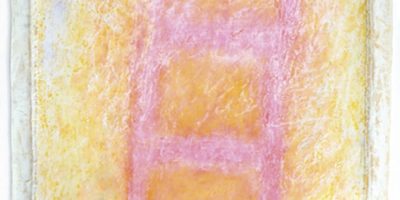Women Graphically
Drawn and Quarterly, $24.95) and The Property (Drawn and Quarterly, $24.95) by Rutu Modan allow their creators to use the graphic novel to explore
modern feelings about the Holocaust. Katin’s is a graphic memoir, and Modan creates fiction; each stars a female Holocaust survivor visiting lands connected to horrific past events.
Katin explored her experience as a Hungarian Holocaust survivor in her first book, We Are On Our Own (2006). In Letting It Go she shows herself as a successful graphic novelist, whose employers have included MTV and Disney, feeling insecure about her personal life. Her grown son is moving to Berlin, and Katin is appalled. She can imagine Berlin only as a violent, dangerous, deadly place full of anti-Semites.
Eventually she goes to Berlin to visit her son, and visits the city again when her art is featured in its Jewish Museum. The Holocaust is always in the background, but rarely confronted directly in these pages, which are primarily about Katin’s modern experiences with Berlin as she sees firsthand what she perceives as the emotional and cultural changes that have taken place there. Instead of going for a dark tale of turmoil, Katin crafts a calmer, sometimes even humorous story of a woman coming to grips with her knee-jerk reactions. “I guess the Germans moved on,” she comments when she finds no signs of anti-Semitism, “and I didn’t.”
In The Property, Rutu Modan introduces us to Regina Segal, a fictional Holocaust survivor who hasn’t been back to her native Warsaw since the war. On her trip to her old home she is accompanied by her granddaughter, Mica, an intelligent and strong-willed young woman. The ostensible reason for the trip is to reclaim property lost during the war, but the reader can soon ascertain its deeper purpose. Modan does a great job of introducing a series of distinct characters and having them interact. Despite its underlying seriousness, the book is peppered with humor on the foibles of humanity’s little misunderstandings and power plays. But then simple scenes — like Regina looking out her car window in Warsaw and having the window shot turn into memories — can pack a wallop.
Like Miriam Katin herself, Modan’s fictional Regina struggles as she confronts the people and places of her past. Standing in a cemetery, she says, “The only justice would be if everyone here were raised from the dead.” Both books show the intensity of feelings the survivors face, which the younger generation can’t fully understand, not growing up with the same fearful experiences.
Despite the parallel content, the stylistic differences show the versatility of the graphic novel format. Katin’s art is brightly and gracefully rendered in colored pencils, and the sway and blending of her colors is beautiful. Modan doesn’t have the same colorful flair; her pages appear in clean panels and straight colors, very tidy and exact. In each case the art carries the story, as the writers use both dialogue and images to take on a searing subject.
Danica Davidson has written about graphic novels for MTV, CNN, Publishers Weekly, Booklist and more. danicadavidson.com.




